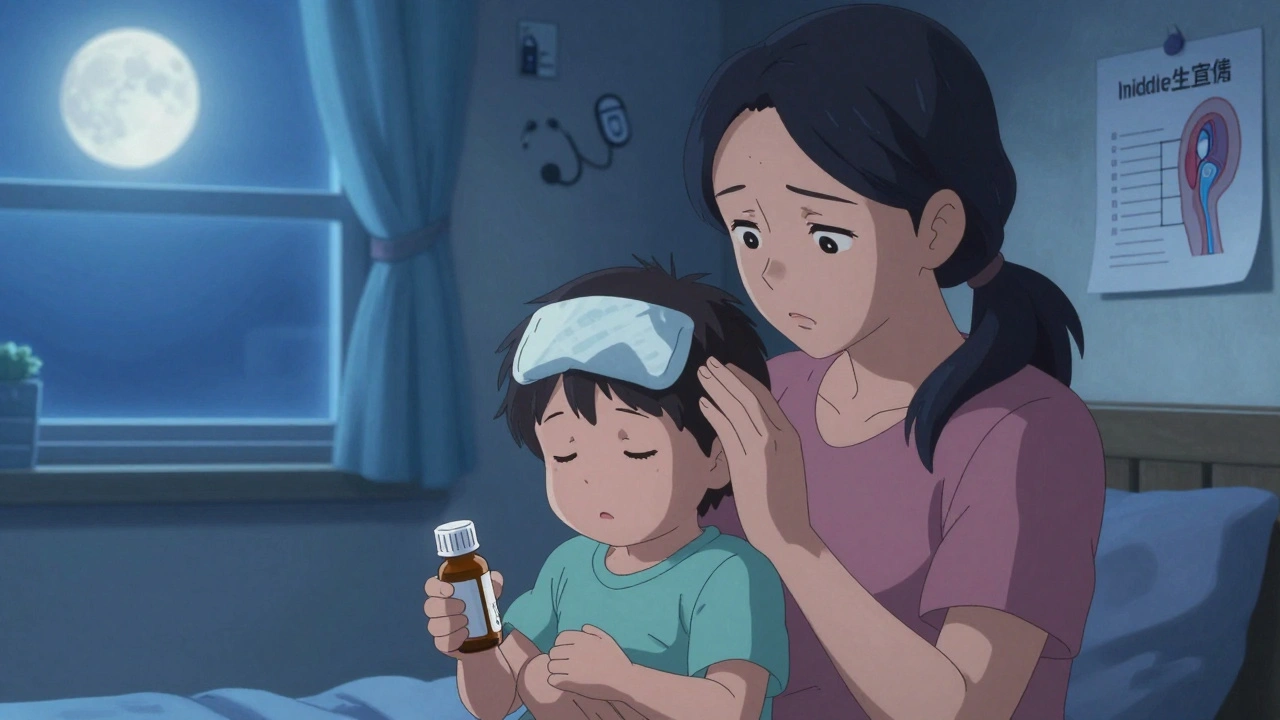Stuck planning your whole life around toilet breaks? That’s the daily reality for millions coping with an overactive bladder. It’s frustrating, embarrassing, and stressful, especially when you never know if you’ll make it to the bathroom in time. For many, Detrol (tolterodine) brings a lifeline—offering fewer leaks and rushing trips to the loo. Let’s get real about what this medication is, how it works, and what you should know if you’re thinking about trying it.
How Detrol Works and Who Uses It
First up, the basics. Detrol’s main ingredient is tolterodine tartrate, an antimuscarinic medication approved specifically for treating symptoms of an overactive bladder (OAB)—that means urgency, leaking (incontinence), and frequent urination. The science is straightforward enough: the drug blocks certain receptors in your bladder muscles that would otherwise make the bladder contract uncontrollably, leading to those inconvenient urges and accidents.
Doctors have been prescribing Detrol since it got the regulatory nod in the UK and US in the late 1990s. We’re not talking just about seniors here—OAB affects all sorts, from people in their 30s to those in their 80s, and not just women either (men struggle with bladder control too, especially after prostate issues).
The main groups who end up with a Detrol prescription usually have classic signs of OAB: racing to the bathroom multiple times a day (and night), leaking a bit when laughing or lifting, and feeling like you can’t empty your bladder properly. It often gets chosen after lifestyle tips—cutting back on caffeine or pelvic floor exercises—just aren’t enough. If you’ve already tried other anticholinergics (oxybutynin, for example) and got fed up with dry mouth or brain fog, Detrol might be the drug your GP suggests next. It’s generally a pill you swallow once or twice a day, depending on what your doctor decides.
People ask if Detrol works straight away. Don’t expect your first dose to change your life overnight. It can take two to eight weeks to really see changes. Consistency is your friend: missing doses messes up the benefits, so keeping pills where you can’t ignore them (like in your toothbrush cup) might help.
Not everyone is a fit for tolterodine. It’s totally off-limits if you have untreated narrow-angle glaucoma, difficulty emptying your bladder fully, or certain digestive issues that make things “stick” (like severe constipation or a slow-moving stomach). Pregnant or breastfeeding? Chat with a healthcare provider—Detrol isn’t always the best choice, but exceptions exist depending on your personal risks.
You may be surprised that Detrol comes in two main forms: the classic Detrol taken twice daily and Detrol LA (“long acting”) taken once daily. The extended-release version is more convenient for people who hate extra pills but some still feel better on the older, split dose because of how their body responds.

Side Effects, Interactions, and Safety Tips
Real talk: no medication is totally free from side effects, and Detrol is no exception. The most common things people notice—according to studies and patient reports—are dry mouth, dry eyes, constipation, and sometimes mild headache. The dry mouth can feel like licking an envelope and forgetting to unstick your tongue. It’s annoying but often gets better with time or adjustments. Carrying sugar-free gum or a water bottle helps. Try eye drops if dryness is driving you mad.
Constipation’s another one and shouldn’t be ignored. Upping your fibre, drinking a few extra glasses of water, and moving more during the day really make a difference. If you’re already dealing with bowel issues, let your doctor know so they can recommend what works alongside Detrol.
Take note if you use any other medicines—Detrol can interact with certain antidepressants, antifungal meds (like ketoconazole), some antihistamines, and drugs for heart rhythm. These combinations can raise levels of tolterodine in the blood, making side effects worse.
Here’s a quick table to give you a proper sense of what to expect side effects-wise (numbers from relevant studies and patient registries):
| Side Effect | How Common? | Can It Be Managed? |
|---|---|---|
| Dry mouth | 30-55% | Often improves, sugar-free gum helps |
| Constipation | 7-14% | Fibre, fluids, gentle exercise |
| Dry eyes | 3-7% | Artificial tears, sunglasses outside |
| Headache | 3-8% | Usually short-term |
| Confusion/drowsiness (mainly in elderly) | <3% | Lower dose, check meds list with doctor |
A couple of tips: always mention every pill or herbal product you’re taking at your next appointment. Do you drink grapefruit juice? It can mess with Detrol’s metabolism and bump side effects—swap it for a different juice. If you’re using Detrol and suddenly feel unable to pee or your stomach blows up like a balloon, get seen at a clinic right away. While rare, these are warning signs not to ignore.
For people over 65, doctors watch out for confusion or sleepiness, as the drug can cross into the brain more easily with age. The starting dose for the elderly might be lower to reduce these risks. Routine blood tests aren’t necessary with Detrol, but regular follow-ups make sense to check how well symptoms are controlled and if you’re feeling OK with the medication.
If you decide to stop taking Detrol (because of side effects, pregnancy, new health conditions), most people don’t report any withdrawal. But don’t just go cold turkey—talk to your GP so they can help you switch safely or try alternatives if your symptoms are coming back.

Living with Overactive Bladder: Practical Tips and Real Experiences
Living with OAB is more than just a medical diagnosis—it’s about how your bladder can hijack everything, from social plans to sleep. Many folks with OAB end up avoiding long car rides, theatres, or even skipping outings at all. Medications like Detrol help, but so does understanding how to manage day-to-day life.
For instance, don’t chug water in one go. Small, regular sips keep you hydrated without overloading the bladder. Watch out for the caffeine ninja—coffee, fizzy drinks, even some teas can make urgency worse. Try switching your cuppa to herbal tea or decaf if mornings are a disaster zone for your bladder.
Pelvic floor exercises (think Kegels) sound boring, but even doing them during TV adverts can strengthen control over time. Some people use phone apps as reminders. One woman in Bristol I chatted with set her phone to buzz gently every two hours to remind her to use the bathroom, which stopped panic-sprint moments entirely.
Absorbent pads and leak-proof underwear aren’t just for emergencies—brands today are discreet and comfortable. Plenty of UK supermarkets carry options that don’t look or crinkle under jeans. No more hiding in oversized jumpers.
Night-time is a particular struggle for some. If you’re losing sleep to bathroom trips, cutting fluid after 7pm helps. Try using a memory foam cushion on your bed if you’re worried about leaks—it’s easier to wash and less stressful in the middle of the night than dealing with full bedding swaps.
Don’t be embarrassed to ask for referral to a bladder nurse specialist—they are lifesavers. These nurses can show you practical tweaks and even teach bladder “retraining” tricks, which sound daunting but work for lots of people with patience and humour. Some clinics in Bristol have special support groups too, where you meet people who actually get it (and can share tips much better than a pharmacy leaflet ever could).
Traveling with OAB? Plan your route using apps or maps with public loos marked—they’re surprisingly accurate now, especially in the UK. When flying, request an aisle seat for easy bathroom access. Let flight attendants know discreetly if you need quick access—they’re used to all sorts of requests.
For teachers, bus drivers, or anyone whose job makes bathroom breaks tricky, speak honestly with supervisors. The Equality Act 2010 protects workers with chronic medical issues in the UK, and “reasonable adjustments” are a legal right—including flexible breaks or temporary shift tweaks if needed.
What if Detrol stops working? You’re not alone. Sometimes switching to a different anticholinergic, adding a beta-3 agonist (like mirabegron), or using tiny doses of both drugs together can restart the improvements. Don’t be discouraged if you need to try a few things before finding the right fit. Technologies like bladder Botox injections might sound new, but more and more people in the UK are using them when pills aren’t enough.
And finally: if leaks or urgency are starting to rule your life, don’t just tough it out in silence. There’s a way to take back your time (and your dignity), whether it’s through Detrol, lifestyle tricks, or support from your GP. Most people with OAB find their “new normal” after a bit of trial and error, and it honestly gets better—even if the path feels awkward at first.







Evelyn Shaller-Auslander
July 16, 2025 AT 10:33i just started detrol last week and honestly? my life’s not perfect but i can finally sit through a movie without panic sweating. dry mouth is brutal though 😅
Gus Fosarolli
July 17, 2025 AT 12:55so detrol’s the new ‘i’m not a ghost haunting the bathroom’ potion? cool. i tried oxybutynin and felt like my brain got stuck in molasses. this one’s less zombie-like, at least. still gonna keep the gum stash handy.
Kenneth Lewis
July 18, 2025 AT 04:08lol i took this for 3 days and then stopped bc my tongue felt like sandpaper. also my cat stared at me like i betrayed her. worth it? idk. 🤷♂️
Tionne Myles-Smith
July 19, 2025 AT 11:29YOU GUYS. i was gonna give up on everything until i tried detrol la. now i can go hiking with my friends without packing a portable toilet. it’s not magic but it’s the closest thing we got. don’t give up!! 💪🫶
Leigh Guerra-Paz
July 20, 2025 AT 13:18Okay, so I’ve been on Detrol LA for six months now, and I just want to say-this isn’t just a pill, it’s a lifestyle upgrade. I used to plan my entire weekend around bathroom locations, like I was playing a real-life game of ‘Where’s Waldo?’ but the Waldo was my bladder. Now? I can go to the mall, sit through a three-hour movie, even take a road trip to Niagara Falls without having a full-on anxiety spiral. Yes, dry mouth is a thing-I’ve gone through more lip balm than I care to admit-but honestly, it’s a small price to pay for not feeling like a prisoner in my own body. And if you’re worried about constipation? Start with prunes. Like, actual, sticky, old-school prunes. And water. So much water. And don’t skip the pelvic floor exercises-even if you do them while scrolling TikTok. Seriously. Your future self will hug you.
Jordyn Holland
July 22, 2025 AT 07:33Oh great, another ‘miracle drug’ for people who won’t just drink less coffee and stop being dramatic. I mean, my grandma didn’t need pills to get through life-she just held it. And she lived to 98. Maybe we should all just… stop being so weak?
Jasper Arboladura
July 22, 2025 AT 21:43Detrol’s mechanism of action is poorly understood in elderly populations due to insufficient CNS penetration studies. Also, the 30-55% dry mouth statistic is misleading-it’s actually 42% in controlled trials, not the pooled real-world data this article cites. You’re all missing the nuance.
Joanne Beriña
July 23, 2025 AT 07:40Why is America letting Big Pharma push this junk? In my country, we just do Kegels and tough it out. This is why we’re weak. You people need to stop medicating every little thing. My dad didn’t take pills for his bladder-he took a belt and a prayer.
Casey Nicole
July 24, 2025 AT 14:24imagine being so fragile you need a pill to pee normally smh. also why are we still using brand names when generic tolterodine is 90% cheaper? #capitalism #stopovermedicating
Kelsey Worth
July 26, 2025 AT 07:48lol i tried this and the dry mouth made me feel like i’d licked a battery. but honestly? i’d rather have a dry mouth than a wet pant. so… win? 🤷♀️
shelly roche
July 26, 2025 AT 09:10As a nurse from rural Georgia who’s helped dozens of patients manage OAB, I’ve seen everything-from people crying because they can’t go to their grandkid’s recital, to folks who finally slept through the night after starting Detrol. It’s not perfect, but it’s not the enemy either. And yes, dry mouth sucks-but so does avoiding your own life. I always tell my patients: ‘You don’t have to be brave. You just have to be willing to try.’ Try the gum. Try the water. Try the Kegels. And if it doesn’t work? That’s okay. There’s another option. You’re not broken. You’re just human. And you deserve to feel safe in your own skin. ❤️